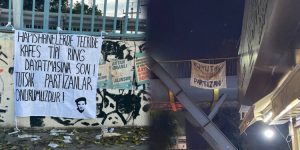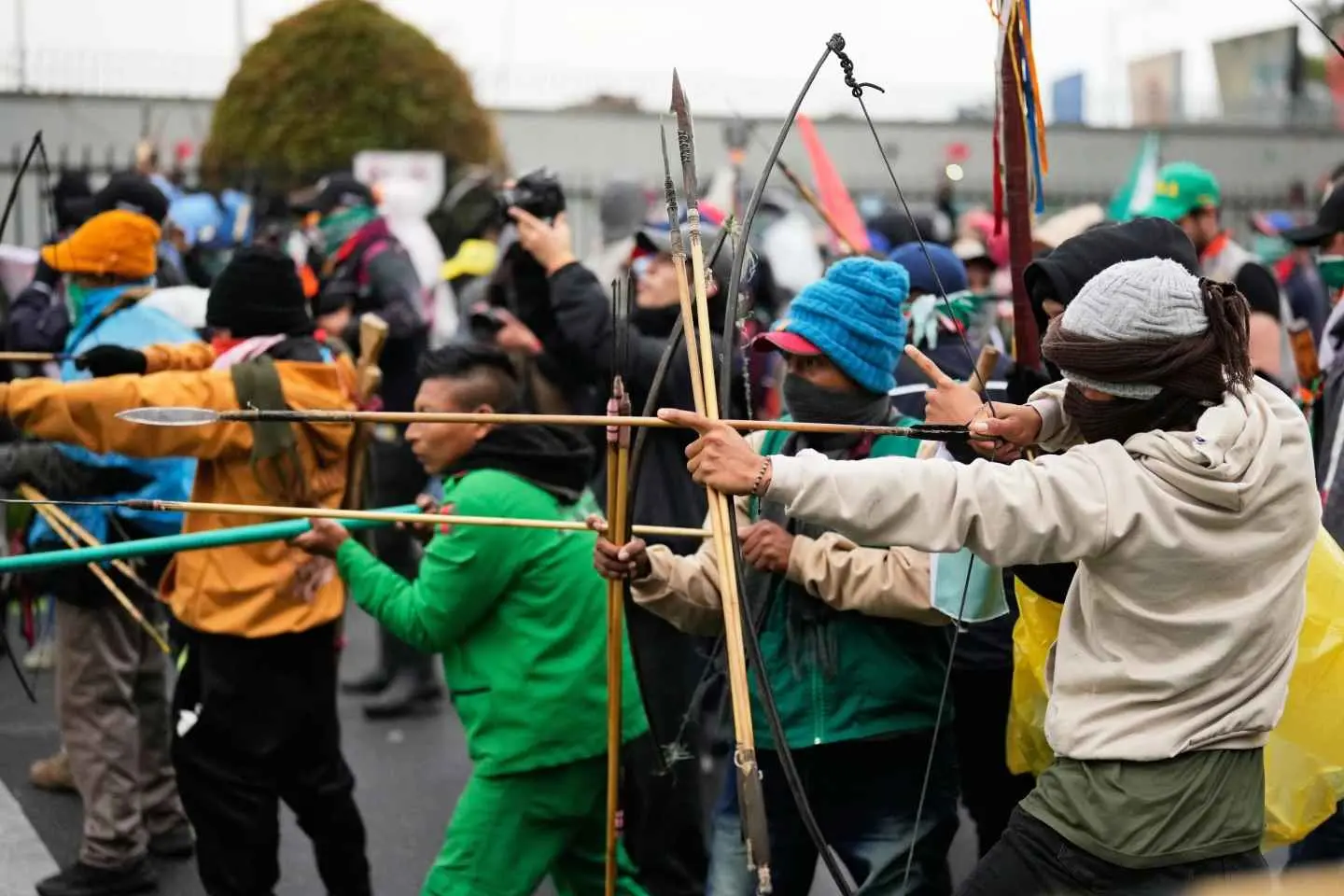
Thousands of Peasants Mobilized Across Colombia
Featured image: Demonstrators in Bogota point their bows against the repressive forces.
Between October 13 and 18, massive popular mobilizations took place in several regions of the country, with a great presence of peasants, mainly organized in the National Agrarian Coordinator (CNA) and the Congress of the Peoples, Nueva Democracia reports. Students, workers, teachers, and various other popular sectors also participated. Starting on Monday, October 13, thousands of demonstrators began their journey to different points where the action developed. In Bogotá, at the National University, a humanitarian shelter was set up the same day, receiving hundreds of protesters from various regions of the country. There, activists condemned the National Security Doctrine, which criminalizes all those who defend their land and label them as “internal enemies,”. Protesters also denounced paramilitarism and the acknowledgment by the Petro government of the Clan del Golfo-EGC as a political actor, a drug cartel and paramilitary organization.
On the night of Monday 13th of October, the police, who had assault rifles, repressed the protesters. The repressive forces harassed the activists, took photos and identified some protesters. A group of armed reactionaries also attacked protesters, while the police remained passive. Despite this repression, the mobilization was successful. In the province of Cesar, in the Besote district, thousands of peasants blocked the Ruta del Sol. Journalists from Nueva Democracia were present, documenting the protests and they made a reportage on the events:
Nueva Democracia has emphasized that during this mobilization in the province of Cesar, the organization of peasants achieved a “great logistical work to ensure food, makeshift shelters, health posts, security teams, communication teams, and human rights efforts, among other tasks.” The role of youth and popular artists was also significant, and the combativeness of the peasant masses was notably high.
In the El Céfiro village, in the municipality of Rosas, Cauca, around 2,000 people blocked the roads.
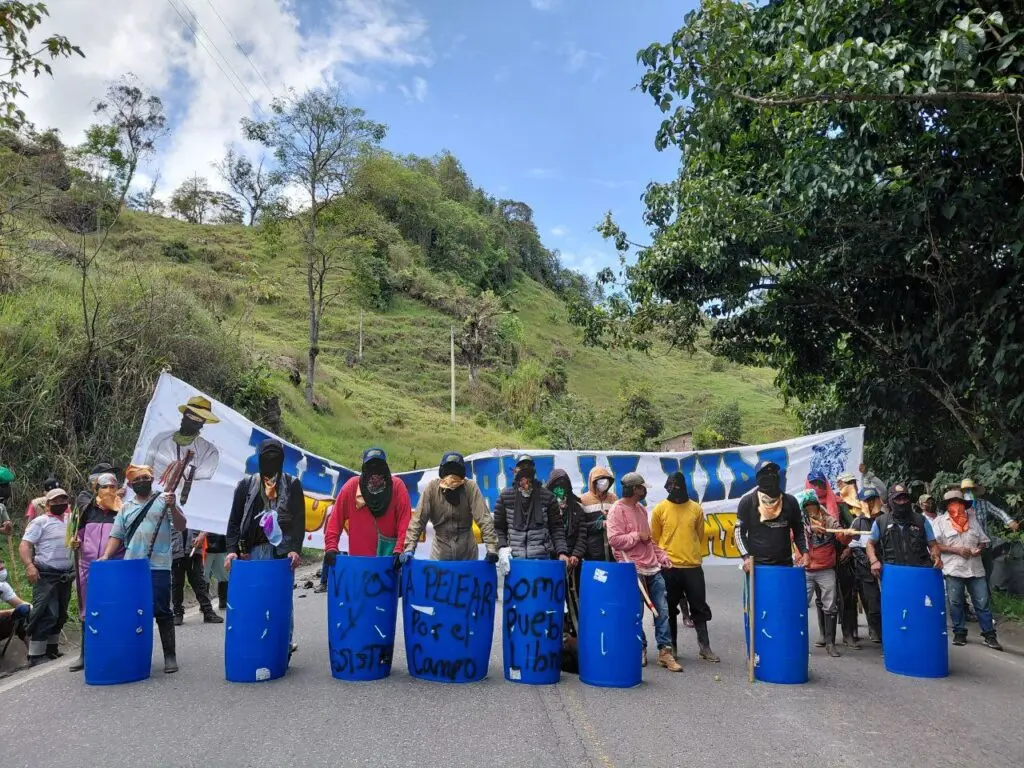
In the La Delfina sector of Buenaventura, Cauca Valley, the blockade was maintained on the 14th of October; however, on the morning of October 15, the mobilization was heavily repressed by the police’s riot squad and officers armed with assault rifles. Nueva Democracia reports that these roads have a big importance since they lead to Colombia’s main port in Buenaventura. Despite the initial eviction, peasants and Indigenous people returned to block the road.
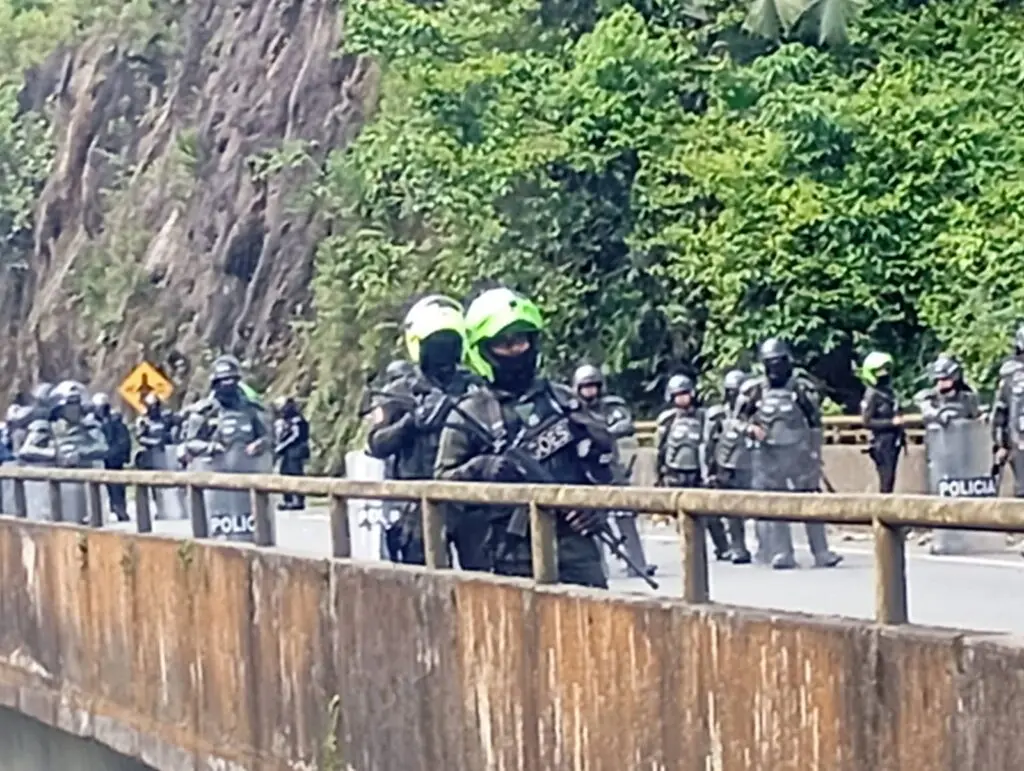
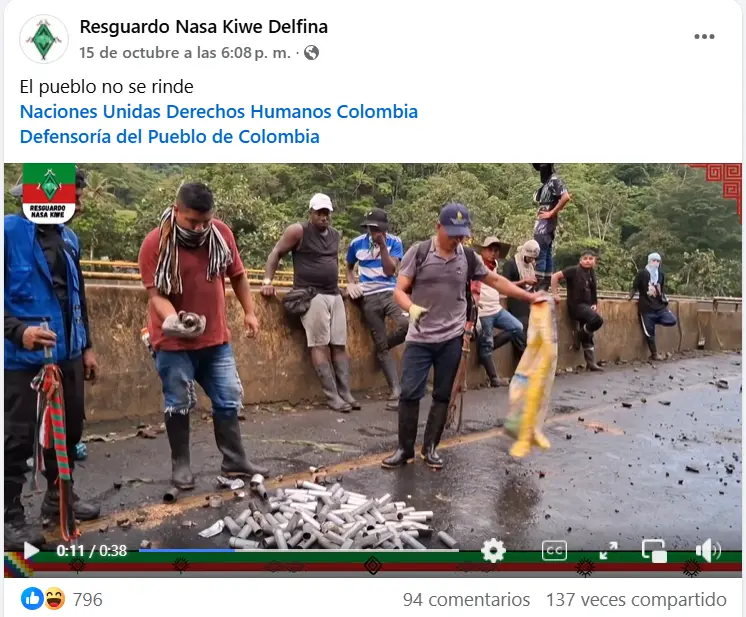
At the El Arrastradero Bridge in the municipality of Tadó, on the Quibdó-Pereira road, and at the toll on the Bogotá-Facatativá road, there were actions involving blockades and the freeing of tolls. In Bogotá, protests and rallies occurred at various institutional buildings and numerous ministries, demanding a redistribution of land that truly addresses the needs of the people, peasants, Indigenous communities, etc. There was also a mobilization towards the U.S. embassy, against U.S. imperialism and its interference. The police repressed the mobilization, resulting in four riot police officers being injured by arrows from the protesters.

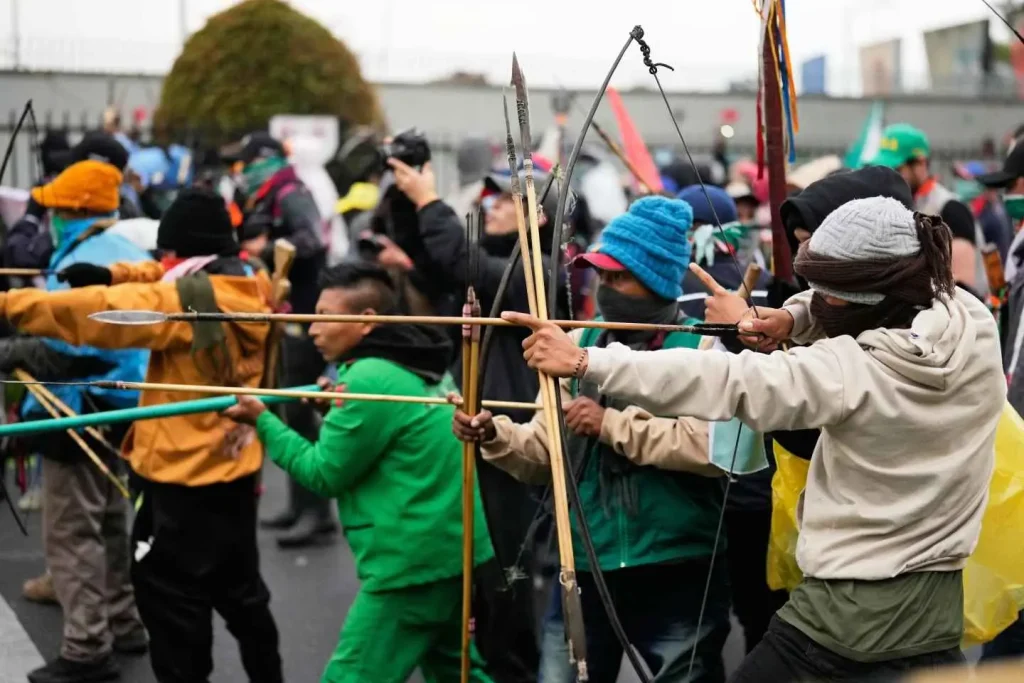
Nueva Democracia reports that “On Saturday, October 18, the national mobilization came to an end after spokespersons reached agreements with the national government, agreements that were achieved through the struggle in the streets.”
The full report on the mobilizations can be read below:
The Colombian newspaper Nueva Democracia is the source of all the pictures and videos used in this article.

